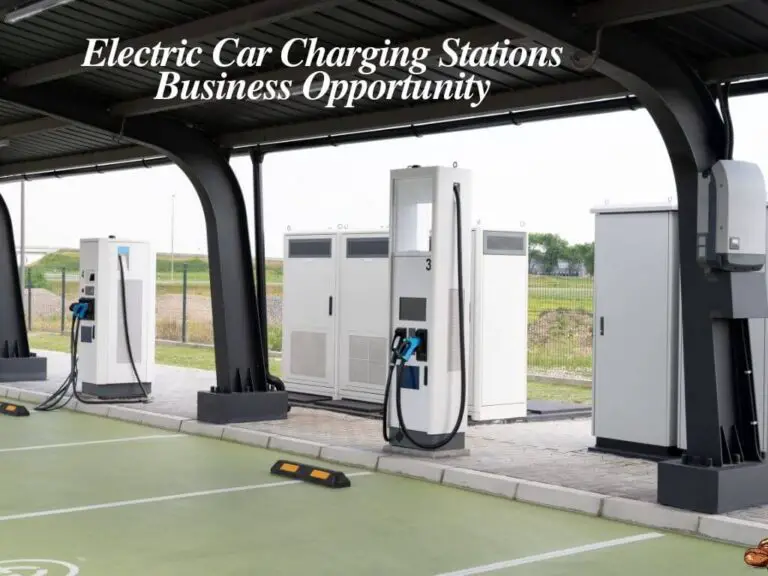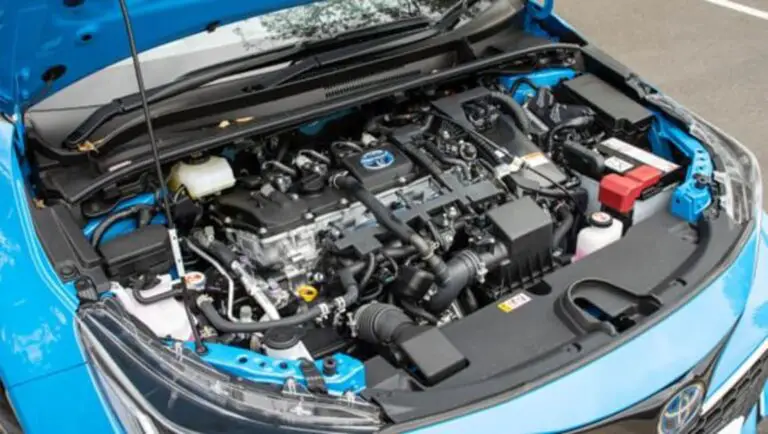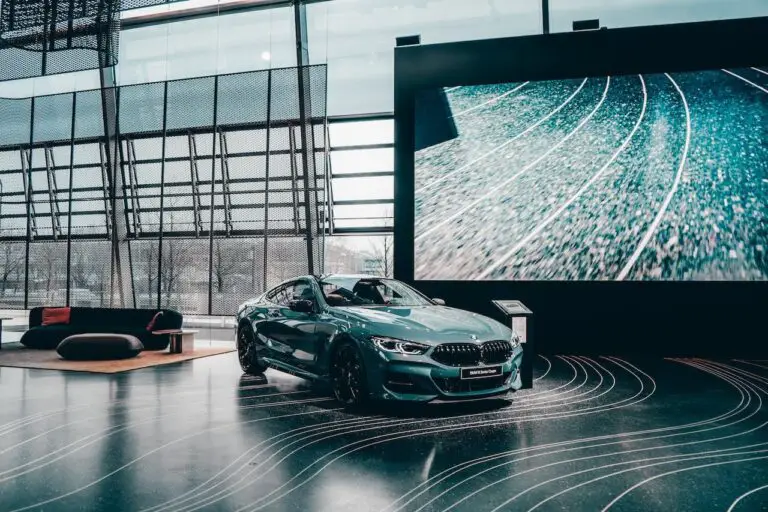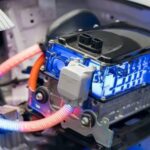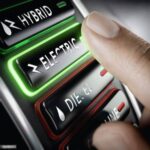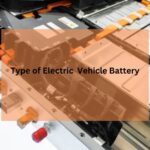Are you one of the many curious minds wondering, can I charge my electric car in my garage? Well, we’ve got some electrifying news for you! As electric vehicles continue to captivate potential buyers, the convenience of charging has become a hot topic. In this article, we’re here to spill the beans on how you can effortlessly charge your electric car right in the cozy confines of your garage, making your daily commute smoother than ever!
Charging your electric car in your garage is not only possible, but it’s also highly recommended. Thanks to the availability of cutting-edge home charging stations and rapid advancements in charging technology, you can bid farewell to those dreaded trips to public charging stations. Picture this: you plug in your electric car at night, and by morning, it’s fully charged, ready to hit the road with zest! Say hello to the convenience of having your very own private charging haven right at home.
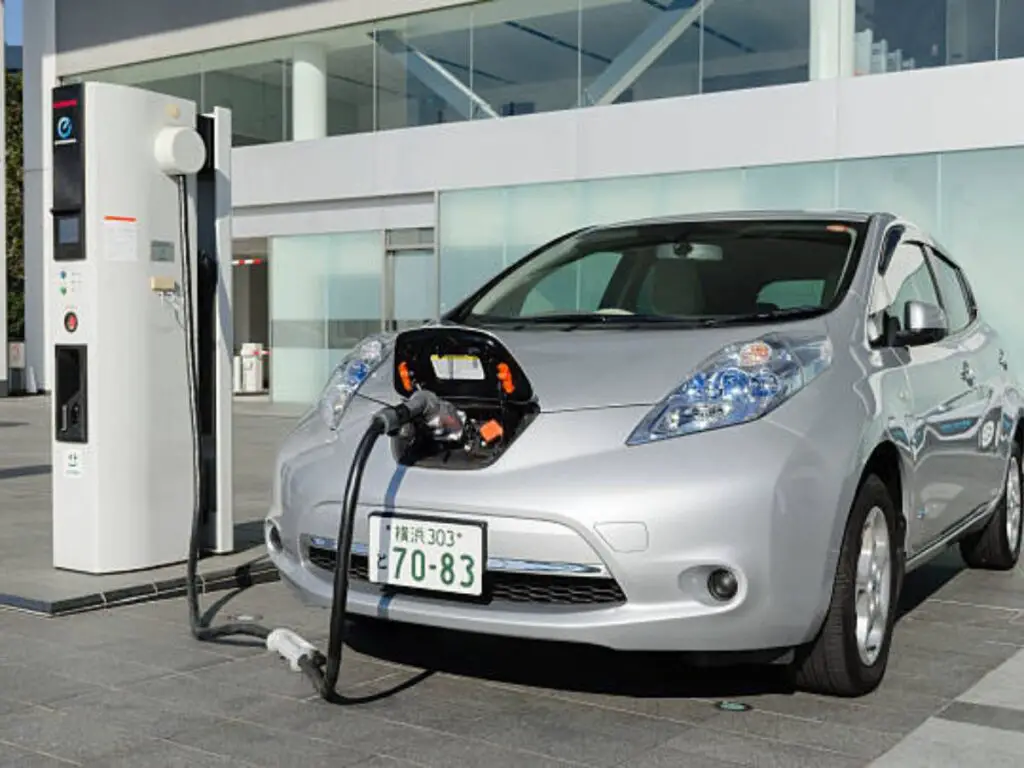
Can I Charge My Electric Car in My Garage?
Yes, you can charge your electric car in your garage. Home EV charging offers convenience and cost-effectiveness with various charging options like Level 1, Level 2, and DC Fast Chargers. Ensure safety precautions and consider renewable energy sources for an eco-friendly driving experience.
How Electric Car Charging Works
In this part, we’ll dive into the fascinating world of charging electric cars. We’ll look at the different types of chargers, charging ports, and factors that affect how long it takes to charge your favorite electric car. So, let’s get started!
Types of Electric Vehicle Chargers
When it comes to charging your electric vehicle (EV), you’ll encounter three main types of chargers: Level 1, Level 2, and DC Fast Chargers. Each type offers different charging speeds and capabilities, catering to various driving needs.
- Level 1 Chargers: Level 1 chargers are the most basic and commonly found charging options. They typically come with your EV upon purchase. You can plug them into a standard household 120-volt outlet, making them convenient for overnight charging. However, keep in mind that Level 1 chargers are the slowest option, suitable for topping up your EV’s battery over extended periods.
- Level 2 Chargers: For a faster and more efficient charging experience, Level 2 chargers are your best bet. These chargers require a 240-volt power source, similar to the ones used for household dryers or ovens. Level 2 chargers are often found in public charging stations, workplaces, and some residential garages. With their increased power, Level 2 chargers can significantly reduce charging times compared to Level 1.
- DC Fast Chargers: When you’re in a hurry and need to charge up your EV quickly, DC Fast Chargers come to the rescue. These high-powered chargers are commonly located along major highways and public charging stations. They supply a direct current (DC) to your vehicle, bypassing the onboard charging equipment and allowing for rapid charging. DC Fast Chargers can add a substantial amount of range in a relatively short time, making them ideal for long-distance travel.
Understanding Charging Port Types
As you venture into the world of EVs, you’ll also encounter different charging port types. These ports are essential for connecting your electric car to the charging station and come in various shapes and configurations. Let’s take a look at the three most common charging port types:
- CCS (Combined Charging System): CCS is the most prevalent charging port type globally, used by many European and American automakers. It combines the traditional AC charging plug with two additional DC pins, allowing for both slow and fast charging options. The versatility of CCS makes it compatible with Level 2 AC charging and high-power DC fast charging.
- CHAdeMO: This charging port type, developed by Japanese automakers, is another popular option, especially in Asia. Like CCS, CHAdeMO supports both AC and DC charging, providing a reliable and efficient charging experience. However, it is essential to check your EV’s compatibility with the specific charging ports available in your area.
- Tesla Supercharger: Tesla has its proprietary charging port, called the Tesla Supercharger. These fast-charging stations are specifically designed for Tesla vehicles and offer rapid charging speeds. While Tesla Superchargers are exclusive to Tesla models, Tesla owners can also use adapters to connect to other charging networks.
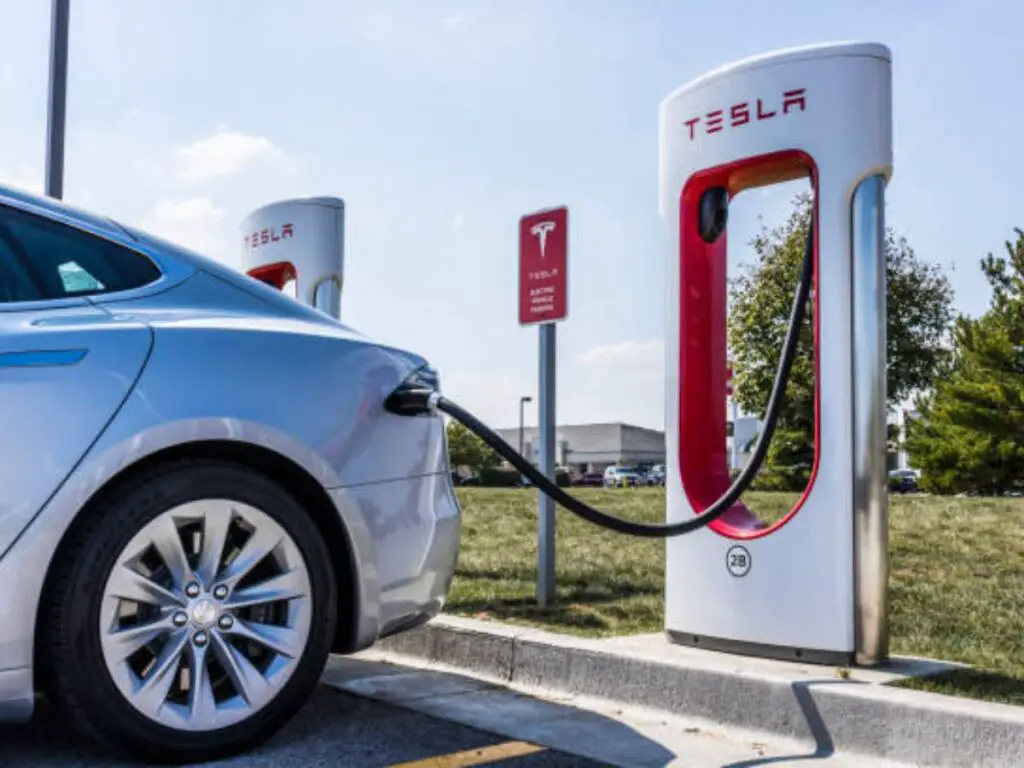
Charging Times: Factors Affecting Charging Speed
The time it takes to charge your electric car depends on various factors, so it’s essential to understand these elements to plan your charging sessions effectively:
- Battery Capacity: A larger battery will take longer to charge fully, irrespective of the charger type. On the flip side, a smaller battery will reach full capacity more quickly.
- Charger Type: As mentioned earlier, different charger types offer varying charging speeds. The higher the charger’s power output, the faster your EV will charge.
- State of Charge: Charging times are affected by how depleted your battery is when you start charging. Charging from a near-empty state will take longer than topping up from a higher battery level.
- Temperature: Extreme temperatures, whether too hot or too cold, can influence charging speeds. Charging may slow down in extreme weather conditions to protect the battery.
- Charging Infrastructure: The availability and compatibility of charging stations in your area will also impact your overall charging experience.
Now that you have a better understanding of how electric car charging works, you can make informed decisions about the most suitable charging options for your electric vehicle. In the next section, we’ll explore some essential tips to maximize your EV’s driving range and get the most out of your emissions-free journey.
Charging Infrastructure: Public vs. Home Charging
Greetings, fellow EV enthusiasts! In this section, we’ll delve into the world of charging infrastructure and explore the differences between public and home charging options for your beloved electric vehicles. So, let’s charge ahead and find out which option suits your needs best!
The State of Public Charging Stations: Availability and Accessibility
As electric vehicles continue to gain popularity, the charging infrastructure has been rapidly expanding to accommodate the growing EV community. Public charging stations are now more prevalent than ever, and you’ll find them strategically placed in urban centers, shopping malls, parking lots, and along major highways.
The accessibility of public charging stations is undoubtedly a boon for EV owners, especially those without access to private charging facilities. When you’re on the go, these charging stations offer a convenient way to top up your EV’s battery while running errands or during long-distance travels. Public charging networks are usually equipped with fast-charging options, allowing you to add substantial range in a relatively short time.
Benefits of Home Charging: Convenience, Cost-Effectiveness, and Personalization
While public charging stations are a valuable addition to the EV ecosystem, home charging presents a myriad of benefits that are hard to beat.
Let’s take a closer look at why home charging could be the ideal choice for you:
- Convenience: One of the most significant advantages of home charging is the sheer convenience it offers. Imagine returning home after a long day and plugging in your EV to charge overnight. You wake up to a fully charged battery, ready to take on the day without any detours to a charging station. Home charging saves you time and hassle, making your electric driving experience seamless.
- Cost-Effectiveness: Charging your EV at home is often more cost-effective than relying solely on public charging stations. Many utility providers offer discounted electricity rates during off-peak hours, making overnight charging even more affordable. Over time, these savings can add up, making your EV ownership experience even more economical.
- Personalization: Home charging allows you to tailor the charging experience to your specific needs. You can invest in a Level 2 charger, which provides faster charging times, or even opt for solar panels to power your EV with clean, renewable energy. With home charging, you have the freedom to make choices that align with your environmental values and preferences.
Overcoming Range Anxiety: How Home Charging Addresses EV Owners’ Concerns
Some EV owners have been worried about range anxiety, which is the fear of running out of charge before getting to your goal. But home charging makes this worry a lot less important because it is a safe and consistent way to charge.
When you can charge your EV at home, you can start each day with a full battery. This gives you the confidence to take your daily drive or longer trips without worrying about running out of power. When you charge your EV at home often, you get used to its range and how it charges, which reduces any remaining worries.
Also, as the infrastructure for charging continues to improve, many governments and companies are giving incentives and subsidies to encourage home charging installations, which makes it even more appealing to EV users.
Both public and home charging have their good points, but home charging stands out because of how easy, cheap, and customizable it is. Since home charging helps EV owners get over their fear of running out of gas, it’s no surprise that many EV fans use this as their main way to charge.
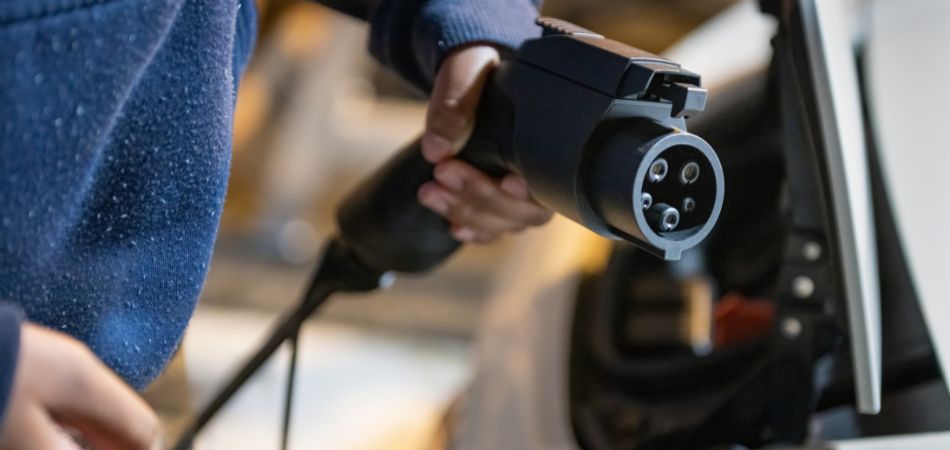
Evaluating Your Garage for EV Charging
Fellow people who like EVs! Now that you know about the different kinds of chargers and the perks of charging at home, it’s time to learn more about EV charging in the garage. Let’s get our hands dirty and look at the things that will help you make the best choice for charging your electric car.
Assessing Your Electrical Panel Capacity: Can It Handle EV Charging?
Before putting a charger for an electric car in your garage, you need to make sure that your electrical panel can handle the extra load. Charging an electric vehicle (EV) takes a lot of power, so make sure your home’s electrical system can handle it.
You might need the help of a professional electrician to figure out how much power your electrical panel can handle. They can check your panel’s amperage level and figure out how much power is available to charge an electric vehicle. In some situations, you may need to update your electrical panel to handle the extra load.
If you make sure your electrical panel can handle the charging needs, you won’t have to worry about problems like circuit overloads or electrical dangers when you charge your EV at home.
Choosing the Right Charger for Your Home: Level 1, Level 2, or DC Fast Charger?
Once you’ve confirmed that your garage can support EV charging, it’s time to choose the right charger for your needs. There are three primary options to consider:
- Level 1 Charger: If you have a standard household 120-volt outlet near your parking spot, a Level 1 charger can be a convenient and cost-effective choice. It usually comes with your EV and offers a slow charging rate. Level 1 chargers are best suited for overnight charging, ensuring your vehicle is ready to go each morning.
- Level 2 Charger: For faster charging times and increased convenience, a Level 2 charger is a popular choice. It requires a 240-volt outlet, similar to those used for household dryers or ovens. Level 2 chargers are readily available and can add significant range to your EV in just a few hours, making them suitable for daily charging needs.
- DC Fast Charger: While DC Fast Chargers are commonly found in public charging stations, some EV owners opt to install them at home for ultra-fast charging capabilities. These chargers provide a high-powered DC current, enabling rapid charging and minimizing downtime. However, keep in mind that installing a DC Fast Charger at home might require significant electrical upgrades and comes with a higher cost.
Installation Considerations: Wall-Mounted Chargers vs. Portable Chargers
When it comes to installing your EV charger, you have two main options: wall-mounted chargers and portable chargers.
- Wall-Mounted Chargers: Wall-mounted chargers provide a fixed and permanent charging solution in your garage. They offer convenience and a tidy setup, as they are securely mounted on a wall near your parking spot. Wall-mounted chargers often come with additional features like cable management systems and smart charging capabilities.
- Portable Chargers: Portable chargers, on the other hand, offer flexibility and mobility. You can take them with you and charge your EV at various locations, which can be beneficial if you frequently travel and rely on public charging. Portable chargers are also an excellent option for those who don’t own their homes or need a temporary charging solution.
By considering your charging needs, lifestyle, and garage setup, you can determine whether a wall-mounted or portable charger suits you best.
With these considerations in mind, you’re well on your way to setting up an efficient and reliable EV charging station right in the comfort of your garage. Don’t forget to consult with an electrician for a seamless installation process.
DIY vs. Professional Installation
Fellow EV enthusiasts! As you gear up to set up your very own EV charging station at home, you might be wondering whether to go the DIY route or hire a professional electrician. In this section, we’ll explore the pros and cons of both options to help you make an informed decision. So, let’s dive in and see which path suits you best!
DIY Installation: Pros and Cons for Handy Homeowners
For the skilled and experienced DIY enthusiasts out there, installing an EV charger yourself might seem like an appealing and cost-effective option. Let’s take a look at the advantages and considerations of a DIY installation:
Pros:
- Cost Savings: DIY installation can save you money on labor costs since you won’t have to hire a professional electrician. If you already have some electrical knowledge and tools, you might be able to handle the installation with relative ease.
- Personal Satisfaction: Successfully setting up your EV charger can be an incredibly rewarding experience. It allows you to take full control of the installation process and gives you a sense of accomplishment.
- Flexibility: DIY installations offer flexibility, allowing you to choose the specific components and placement that suit your preferences and garage layout.
Cons:
- Safety Risks: Electrical work can be hazardous, especially if you lack experience or understanding of electrical systems. Incorrect installation can lead to electrical fires, shocks, or damage to your EV’s charging equipment.
- Warranty Concerns: Some EV charger manufacturers may require professional installation to validate their warranties. A DIY installation could void the warranty coverage, leaving you responsible for any repairs or replacements.
- Code Compliance: Ensuring that your installation meets local electrical codes and regulations is crucial for safety and insurance purposes. A DIY installation might not always guarantee compliance.
Hiring a Professional Electrician: Ensuring Safety and Compliance
If you prefer a hassle-free and secure installation process, hiring a licensed electrician is the way to go. Here are some of the benefits and considerations of professional installation:
Pros:
- Safety Assurance: Licensed electricians are trained to handle electrical systems safely. They have the expertise and knowledge to install your EV charger correctly, minimizing any safety risks.
- Code Compliance: Professionals are well-versed in local electrical codes and regulations. They will ensure that your installation meets all the necessary requirements, providing you with peace of mind.
- Warranty Protection: Opting for professional installation often ensures that your EV charger’s warranty remains valid, protecting you from unexpected repair costs.
Cons:
- Higher Cost: Hiring a professional electrician comes with a cost, which might be higher than a DIY installation. However, the added expense is often worth it for the expertise and safety they provide.
- Scheduling: Depending on the electrician’s availability, scheduling the installation might take some time. Be sure to plan ahead to avoid unnecessary delays.
Obtaining Permits and Understanding Local Regulations
Whether you choose a DIY or professional installation, it’s essential to understand the permitting process and local regulations related to EV charger installations. Some areas require permits for electrical work, and failure to obtain them can result in penalties or complications when selling your home.
Before starting the installation, check with your local authorities or a licensed electrician to determine if permits are necessary and ensure compliance with all relevant regulations.
Both DIY and professional installations have their merits, but safety and compliance should always be top priorities. If you’re confident in your electrical knowledge and skills, a DIY installation might be an option. However, for a worry-free and compliant installation, hiring a professional electrician is the safest bet.
Now that you’re equipped with this knowledge, you can confidently move forward with setting up your EV charging station. In the next section, we’ll delve into the world of EV maintenance and some essential tips to keep your electric ride running smoothly. Until then, charge on, and happy driving!

Essential Components of Home EV Charging
In this section, we’ll explore the crucial components that make up a seamless and efficient home EV charging setup. From charging cables to wall-mounted stations and smart charging solutions, we’ve got you covered. So, let’s plug in and discover the essentials of home EV charging!
Charging Cables: Types, Lengths, and Best Practices
Charging cables are the lifelines that connect your electric vehicle to the charging station, so choosing the right cable is essential. Here’s what you need to know about charging cables:
- Types: There are two main types of charging cables: Type 1 (J1772) and Type 2 (Mennekes). The type of cable you need will depend on your EV’s charging port. Type 1 is commonly used in North America, while Type 2 is more prevalent in Europe and other regions.
- Lengths: Charging cables come in various lengths, typically ranging from 15 to 25 feet (4.5 to 7.6 meters). It’s essential to consider your parking spot’s distance from the charging station when choosing the cable length. Opt for a longer cable if you need more flexibility in parking positions.
- Best Practices: To ensure safety and optimal charging performance, always use high-quality and manufacturer-approved charging cables. Avoid using extension cords or adapters, as they can cause voltage drops and increase the risk of overheating.
Wall-Mounted Charging Stations: Features and Brands to Consider
Charging stations that are attached to the wall are a permanent and handy way to charge your car in your garage. Here are some brands and traits to think about:
- Features: Look for charging stations with important features like overcurrent safety, ground fault circuit interrupters (GFCIs), and easy-to-use interfaces. Some stations also have tools for keeping your charging area clean and tidy.
- Power Output: The charging speed is based on how much power the charging port puts out. Consider a higher-powered station if you have a big battery or want to charge it faster.
- Brands: Several well-known companies make wall-mounted charging units that work well and are reliable. Tesla, Siemens, ClipperCreek, and JuiceBox are all well-known brands for how well they work.
Smart Charging Solutions: Monitoring and Managing Your EV Charging
Smart charging options give you a new level of ease and control when you charge your EV at home. What you need to know is:
- Monitoring: Some smart chargers have built-in features that let you keep track of your charging sessions, how much energy you use, and even how much it costs. This knowledge helps you figure out the best way to charge your EV and how it affects your electricity bill.
- Remote Control: Smart charging solutions let you start, stop, or plan charging sessions from your phone or the web. This means you can save money on power by using it outside of peak hours or make sure your EV is fully charged when you need it.
- Integrations: Some smart chargers can work with home energy control systems or renewable energy sources like solar panels. This lets you charge your electric vehicle (EV) with clean, green energy and lower your carbon footprint even more.
For a smooth and enjoyable electric driving experience, you need a home EV charging setup that is well thought out and works well. By learning about the different charging cables, picking the right wall-mounted charging station, and choosing smart charging solutions, you can optimize your charging process and get the most out of your electric car.
Safety Precautions for Home EV Charging
As we continue to learn more about charging electric cars, it’s important to put safety first in our home charge setups. In this part, we’ll talk about some important safety tips that will help you charge your phone safely and without worry. So, let’s buckle up and talk about how to charge an EV safely at home.
Electrical Safety: Understanding Grounding and Surge Protection
Ensuring proper electrical safety is the first step in setting up your home EV charging station. Here are some key considerations:
- Grounding: Proper grounding is crucial for electrical safety. Make sure your EV charger and electrical panel are adequately grounded to prevent electric shocks and other hazards.
- Surge Protection: Invest in surge protectors for your charging station and electrical panel. Surges and voltage spikes can damage sensitive charging equipment, leading to expensive repairs.
- Electrical Inspection: Before installing your charging station, consider having a licensed electrician conduct an electrical inspection to identify and rectify any potential safety issues.
Preventing Overheating and Fire Hazards: Best Practices for EV Charging
To safely charge your electric car, you need to make sure it doesn’t burn or catch fire. Here are some of the best things to do:
- Don’t Use Extension Cords: Always plug your charging station straight into an outlet. Extension cords can overheat and start fires.
- Proper Ventilation: Make sure that both the charging station and the charge port on your EV have enough airflow to let heat escape. Don’t charge in small areas with little airflow.
- Check the Charging cords: Check your charging cords often for signs of damage or wear. Replace any wires that are frayed or broken right away.
Safe Charging in Different Weather Conditions: Rain, Snow, and Extreme Heat
To safely charge your EV, you also have to adjust to different weather circumstances. Here are some tips on how to charge in different kinds of weather:
- Rain and Snow: If your charging station is outside, you might want to protect it from rain and snow with a weatherproof cover or shelter. Also, make sure the charge port of your EV is always dry before you plug it in to keep water from getting in.
- Extreme Heat: When it’s hot, don’t charge your phone during the day when power use is high. Charging at night or early in the morning, when it’s cooler, can help keep the battery from getting too hot.
- Avoid Wet Surfaces: If your charging station is set up in a garage or carport, be careful not to touch wet surfaces when handling charge cables to avoid electrical hazards.
Safety should always be the top concern when setting up and using a home EV charging station. By understanding the importance of grounding and surge protection, following best practices to avoid overheating and fire hazards, and adjusting to different weather conditions, you can make sure that charging your electric vehicle is safe and pleasant.
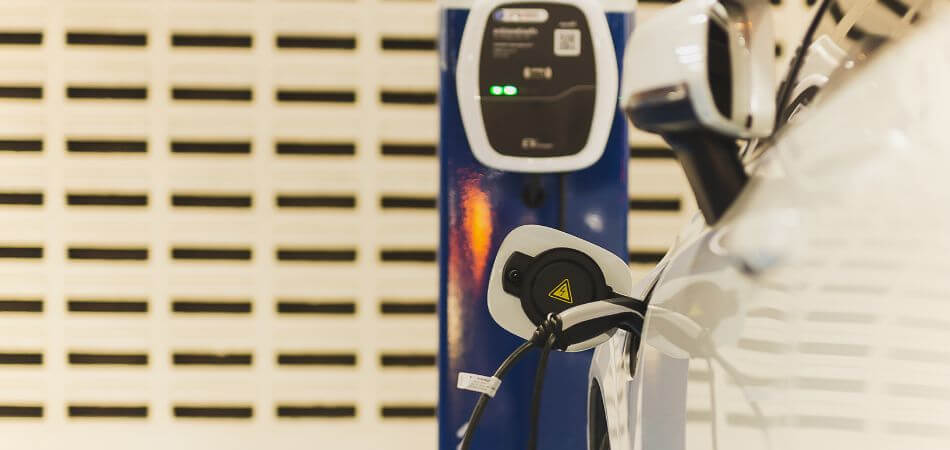
Maximizing Efficiency and Reducing Costs
Greetings, people who care about the environment! As we get closer to the end of our blog series, it’s time to look at some useful tips that will help you charge your EV at home more efficiently and save money. You can make your electric driving experience even better by making smart choices and using green options. So, let’s speed up with ways to be more efficient and save money!
Time-of-Use (TOU) Plans: Taking Advantage of Off-Peak Electricity Rates
Many utility companies offer Time-of-Use (TOU) plans that can be a game-changer for EV users. With these plans, the price of energy changes depending on what time of day it is. This encourages people to charge their electric vehicles during off-peak hours. By charging overnight or at other times when energy use is low, you can take advantage of lower electricity rates and cut your total charging costs by a lot.
TOU plans not only help you save money, but they also help balance the load on the power grid. This means that charging your electric vehicle is part of a more sustainable energy system.
Utilizing Renewable Energy Sources: Solar Panels and Green Energy Options
If you want to take your efforts to be green to the next level, you might want to charge your EV with energy from clean sources. Solar cells, in particular, are a great way to get clean, green energy to power your electric car.
By putting solar panels on your roof, you can use the sun to power your home and charge your electric vehicle. This makes you less reliant on the grid and reduces your carbon footprint. Also, putting solar panels can be a good financial choice in some areas because they offer benefits and tax credits.
In addition to solar cells, many utility companies give green energy choices like wind, hydro, and geothermal power. Switching to a green energy plan is an easy but important step toward driving in a way that is sustainable and doesn’t cause pollution.
Energy-Efficient Home Upgrades: LED Lighting, Insulation, and Energy Audits
Consider making energy-efficient improvements to your property to maximize efficiency and reduce your overall energy expenses. Here are some alternatives to consider:
- LED Lighting: Replacing traditional incandescent bulbs with energy-efficient LED lights can significantly reduce your electricity usage and increase the lifespan of your lighting fixtures.
- Insulation: Appropriate insulation in the home helps maintain a comfortable interior temperature and reduces the burden on the heating and cooling systems, thereby saving energy and money.
- Energy Audits: Consider conducting an energy audit of your property in order to identify energy-wasting areas. Numerous utility providers offer energy audits at no cost or at a discount to their customers.
The implementation of these energy-efficient enhancements not only improves your EV charging process, but also contributes to a greener and more sustainable living environment.
Final Thought
Can I Recharge My Electric Car in My Garage? Yes, you can charge your electric vehicle in the garage. Home EV charging is both convenient and economical. Different charging options, such as Level 1, Level 2, and DC Fast Chargers, enable you to tailor your charging configuration to your specific requirements.
Safety measures, such as proper grounding and surge protection, guarantee a safe charging experience. For secure charging, weather conditions such as rain, snow, and extreme heat must be considered.
Using Time-of-Use (TOU) plans and renewable energy sources, such as solar panels, can increase efficiency and decrease costs. Additionally, energy-efficient residential improvements such as LED lighting and insulation contribute to a sustainable future. Charge with assurance and enter the world of emission-free transportation from your garage!
FAQ’s
Is it safe to charge an electric car inside a garage?
Charging an electric car inside a garage is generally safe, but precautions are vital. Use a reputable and properly installed charging station to minimize risks.
Ensure your garage is well-ventilated, reducing the potential for heat buildup during charging. Follow manufacturer guidelines and maintain proper cable management to prevent tripping hazards.
Keep flammable materials away from the charging area. If your EV is equipped with a battery thermal management system, it will further enhance safety. Regularly inspect the charging equipment for any signs of damage or overheating.
Can you plug an electric car into your garage outlet?
Plugging an electric car into a standard garage outlet is possible, but it’s important to consider a few factors. Most standard outlets are 120 volts, which means charging will be slower compared to a dedicated Level 2 charger (240 volts).
While it’s a convenient temporary solution, a dedicated charger is recommended for faster and more efficient charging. Consult an electrician to ensure your garage outlet can handle the load and consider upgrading to a Level 2 charger for optimal charging speed and safety.
How do I prepare my garage for EV charging?
To prepare your garage for EV charging, follow these steps. First, ensure your electrical panel can handle the additional load and consider installing a dedicated circuit with a qualified electrician.
Next, choose a Level 2 charging station that suits your EV’s needs and your budget. Mount the station on a sturdy wall, ideally near your car’s charging port. Make sure there’s proper cable management to avoid tripping hazards.
Finally, ensure good ventilation and lighting in the charging area. A well-prepared garage will provide convenient and safe charging for your electric vehicle.
Is it safe to run an electric car in a closed garage?
Running an electric car in a closed garage can be dangerous due to the risk of carbon monoxide buildup, even though electric vehicles produce no tailpipe emissions.
Carbon monoxide, a colorless and odorless gas, can result from combustion in adjacent gasoline-powered vehicles or equipment, posing a serious health hazard.
It’s essential to maintain proper ventilation and ensure the garage is well-ventilated before operating any vehicle indoors to prevent such risks.

